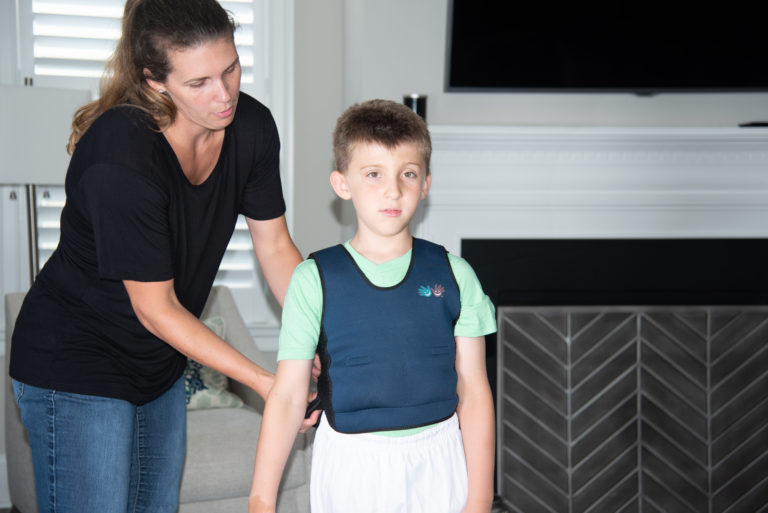How To Have A Sensory-Friendly Halloween: Costume Choices

Children with sensory sensitivities often have a low tolerance for incoming sensory stimulation and therefore, may become bothered by certain sensory input (such as lights, noises, or smells) more than peers. These children may become disruptive and agitated in attempt to avoid an aversive stimulus. Therefore, it is incredibly important that we understand our children’s sensory needs and make smart costume choices!
Tip #1: Choose a Costume Your Child Can Wear Over His/Her Clothes
Children with extreme sensory sensitivities have low thresholds for incoming sensory stimulation and can become distracted or distressed when these thresholds are exceeded. So, when picking a costume, choose wisely to make trick-o- treating as enjoyable as possible for everyone! Choose fabrics that are similar in texture to the ones you know your child already tolerates wearing on a day-to-day basis. If you can’t find a costume made of similar fabrics, then choose a costume that your child can wear over his or her normal clothes to create a barrier.

Tip #2: Choose a Costume That Provides Your Child With Squeezing/Calming Pressure
If possible, choose a costume that provides your child with deep pressure, as this gives her calming input throughout the day/night. In response to squeezing or dee pressure, our sensory system produces a neurochemical that has a calming effect on other sensory systems. If you can’t find a costume that provides this deep pressure, try allowing your child to wear a heavy backpack as part of his costume. Be creative! Maybe it could be a ninja turtle shell backpack, or he could even wear a cape over the weighted backpack so it can’t be seen. A Lycra/Spandex suit type costume is another good costume choice that may provide your child with calming proprioceptive input. Allowing your child to wear something weighted or tight will provide her with calming input that may make everyone’s night more enjoyable!

Tip #3: Avoid Light Touch From Costumes
When possible, try to avoid costumes that require face painting, masks covering your child’s face, or have parts, such as tags or tassels, which might irritate your child’s light touch receptors. A child with tactile sensitivities might be aversive to light tactile input on her face or be bothered by certain textures like masks or face paint. Light touch is considered an alerting sensory input and is typically less tolerable than deep pressure input, as it can cause distress in your child.

Thank you for reading How To Have A Sensory-Friendly Halloween: Costume Choices.
Written by: Carleigh Brawley, MS, OTR/L
Lead Occupational Therapist
Tri-County Therapy

